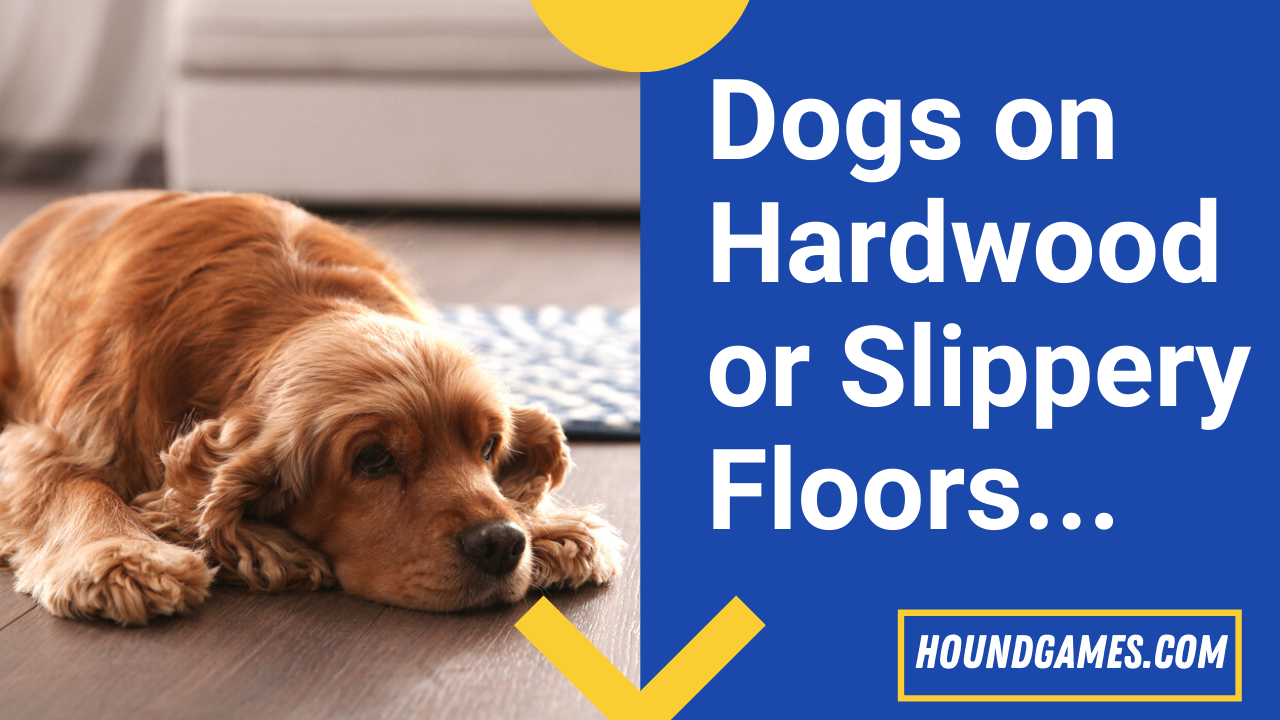If you have slippery floors, hardwood flooring, or thinking about getting them, you should know if they are bad for your dog. We’ve all seen the videos of dogs skidding across polished floors, but what are the short and long-term problems slippery surfaces have on dogs?
In brief, slippery floors, including laminated hardwood floors, are not good for dogs. This is especially true for puppies. There is a higher risk of injury to dogs, due to falls, as well as developmental issues in puppies, such as swimmer’s syndrome.
Are slippery floors bad for dogs?
In general, slippery floors are bad for dogs. Fall injuries are one of the most common injuries that veterinarians encounter. The majority of fall injuries involve dogs slipping and losing their footing.
Dogs don’t often fall ‘off’ from heights, with couches and beds being the only notable culprits in fall-related injuries (Here’s what to do if it happens though). Instead, most dog fall injuries are attributed to hardwood or tiled floors, linoleum, and polished concrete.
But how much of a risk is something as simple as hardwood flooring to them? It’s a tricky question to answer. Larger dogs who may be running, or older fragile dogs, can be seriously injured by losing their grip on a slippery surface.
A more insidious problem is that the lack of grip places more strain on a dog’s joints. This is especially bad for large and giant breed dogs, who are statistically more at risk of developing bone and joint problems, like hip dysplasia, if they grow up walking on slippery surfaces.
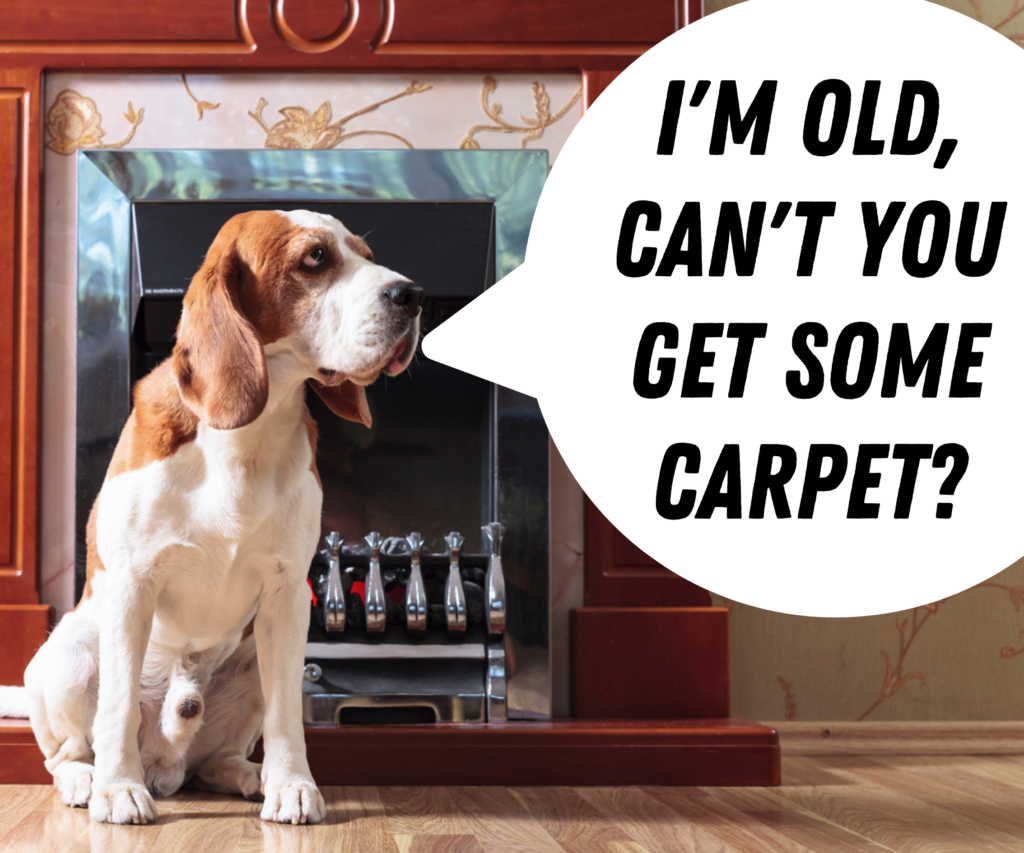
Are hardwood floors bad for dogs?
Unfortunately, hardwood floors present risks associated with slippery surfaces for dogs, and can also cause issues with joints for larger breeds.
Hardwood floors may cause joint issues
While many factors play a role in conditions like hip dysplasia, such as nutrition, genetics, and body condition, slippery surfaces are a known risk factor that exacerbates (or even causes) osteoarthritis or other musculoskeletal problems.
Sometimes another factor to consider is that a surface without grip may also be much harder for an old dog to navigate, as standing and getting up may already be an issue due to joint pain.
If you have stairs in the house, you might also like to read our post, Are Stairs Bad For Dogs? (Veterinarian Answer)
Hardwood floors can lead to injury
Just like children, excited dogs and puppies love to zoom around and play. Similarly, older dogs may be growing a bit unsteady on their feet. Either way, slipping and getting hurt on a hardwood floor is a possibility.
It can be a laugh watching our dogs getting up to full running speed and then trying to turn or stop as they keep sliding. But encouraging this behavior can lead to injuries. A dog that can’t stop can run into a wall and their bones can break. Including the nose, which we have an article about here.
Hardwood floors can also be cold for dogs and so you’ll want to make sure you watch out for signs your dog is cold.
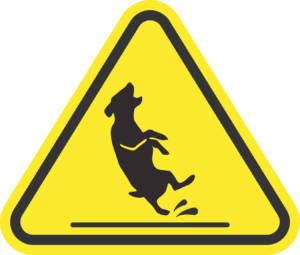
A breeding ground for mold, mites, and fleas
As lovely as they are, wood floors that are not properly sealed or treated are liable to absorb water and swell and contract when they dry out. The older the floor is, the bigger the potential problem.
The contraction during a dry spell causes tiny cracks in the wood, and moisture and humidity make this a perfect place for mold to spawn. This mold could naturally be dangerous to all members of the household, especially your dog, as they may be lying on it.
It is also a great hiding spot for dust mites, a common cause of dog allergies, or even flea larva that can stay dormant for months.
Dogs can be a problem if you love your hardwood floor
Realistically, not every pet owner is a pet parent, and for people that aren’t quite as devoted to their dogs, a hardwood floor can sow the seeds of a rift between a human and their canine.
Firstly, dogs will scratch a hardwood floor, or make a mess on the floor, at some point in their lives that could damage the wood. In fact, dogs will, without a doubt, damage your hardwood floors in some way at some point.
Therefore, if you have hardwood flooring, you may want to factor this in before you get a dog.
Are tile floors bad for dogs?
Yes, tile floors are generally bad for dogs. Although tiles make cleaning easy, the slippery service can be a fall hazard for your dog. Tiled floors can also add pressure to joints, such as hips and knees. This can lead to hip dysplasia, which may be more likely to occur in a puppy raised on a slippery service.
Most tiles are slippery, and even those with a mat finish can still be hazardous to dogs.
The reason we don’t slip and fall on tiled floors has a lot to do with a complicated bit of physics. Human feet have a large surface area compared to our size. Dogs’ paws have a tiny surface area compared to humans. Yet, if you think that having four paws should balance things out, you would be mistaken. At least, according to Da Vinci, who said ‘no’ in his work on the laws of friction back in 1493.
Can slippery floors cause hip dysplasia?
Puppies raised on slippery floors are 1.6 times as likely to develop clinical signs of hip dysplasia. That is the finding of a 2019 study that looked at how different environmental factors impact a puppy’s development. So while it isn’t clear that slippery floors cause hip dysplasia, it is likely the extra strain it puts on their joints may definitely be a contributing factor.
Are slippery floors bad for puppies?
Yes, slippery floors, such as hardwood flooring, are bad for puppies for several reasons. However, before we delve into why slippery floors are bad for puppies, let’s consider a more natural environment.
If we go back to how puppies were born in the wild, it was typically in a den. The dirt ground is always concave and has a lot of traction to allow their hind legs to push them toward their mother, while the front legs push their siblings away from the teat. This early use of their joints and legs aids the natural development of their limbs.
This has led some experts to theorize that problems like hip dysplasia may start as early as the whelping box, where puppies simply aren’t getting enough traction to move themselves around. This may be an early contributing factor to the joint laxity (looseness) that causes dysplasia and other issues.
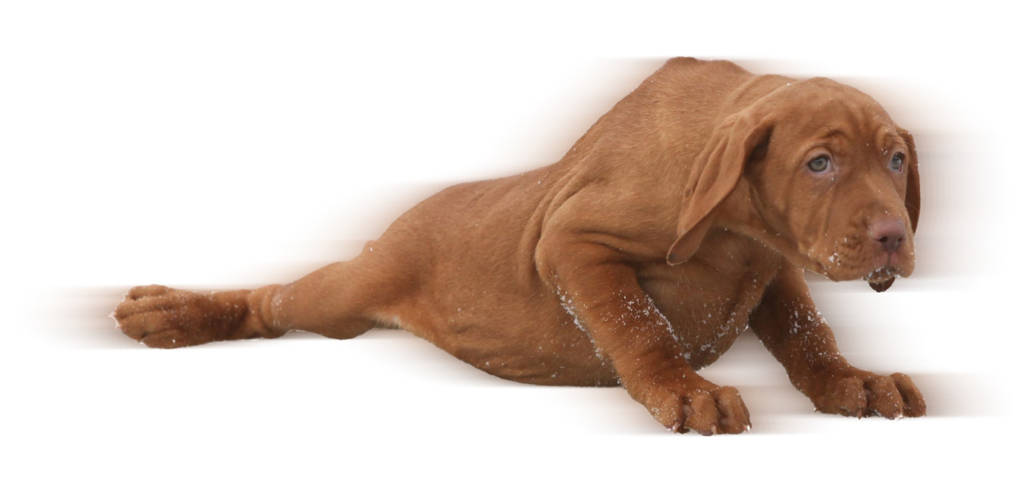
Primary puppy developmental health concerns of slippery floors
1. Swimmer syndrome
Undoubtedly one of the most severe diseases associated with slippery floors, swimmer syndrome is a serious and debilitating condition. A puppy with swimmer syndrome does not stand up and walk. Instead, they move around by ‘swimming’ while flat on their belly with their limbs splayed unnaturally to the side.
There are genetic and other factors that make a puppy more susceptible to swimmer syndrome. Singletons, or puppies who are “only children” with no siblings to struggle against for the teat may also be more likely to get this. However, a peer-reviewed study found that slippery surfaces may also be a risk for developing the condition.
2. Hip dysplasia
As we’ve discussed, puppies raised on slippery floors are 1.6 times more likely to develop hip dysplasia. However, the mechanics of exactly how it happens are rather complex.
However, one can intuitively grasp how a slippery floor can be bad for a puppy’s hips and elbow joints. Think about how a puppy’s weight gets distributed over its legs.
We carry our center of gravity directly over our legs. So even the way we walk is mechanically different from a dog or puppy. That is why we don’t go splay-legged from growing up with many slippery surfaces with which to contend.
A puppy’s center of gravity sits near the upper middle back. This distribution impacts their joints because it pushes their paws outwards and away from their body. This isn’t really a problem if the surface holds their feet in place. But if the surfaces are slippery, they need to work harder to keep their legs under them.
This puts continuous strain on the joints and ligaments in their hips and knees.
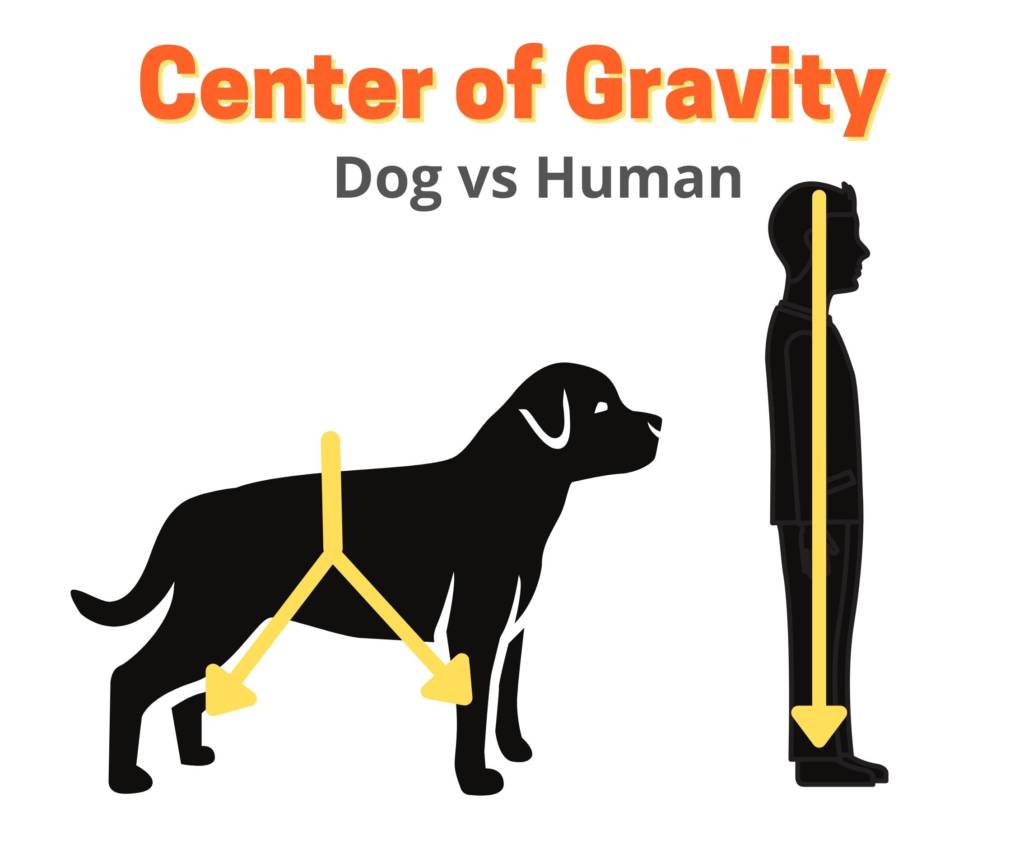
Other severe deformities or issues can be linked to slippery surfaces, including carpal laxity syndrome.
How can I make my floors less slippery?
The way you make your floors less slippery depends on your personal preferences. An easy, inexpensive option is to put down carpet runners. Alternatively, you could just put rugs where your dog is most likely to slip, like on corners and in doorways.
Depending on the type of flooring, you can apply an anti-slip top coating. It’s a lot like applying varnish to wooden furniture, except it improves traction. If your home mostly has slippery flooring, it may be your only option to keep your dogs safe.
In addition to carpeting, rugs, and special coatings, simply keeping slippery floors dry and dust-free goes a long way to addressing slippery floors. Regrettably, no smooth floors are appropriate for a puppy, especially if it is a large breed,but limiting their access to smooth areas can go a far way.
Does your dog like to scratch on the door? You might like to read our post, 11 Easy Ways to Stop Your Dog Scratching the Door.
Summary
In brief, slippery floors, including laminated hardwood floors are not good for dogs and they are especially not good for growing puppies. If you have hardwood floors and you are desperate for a dog, you will need to accept some extra wear and tear on them that comes with the territory.
At the same time you need to be aware of the dangers that slippery surfaces and hardwood floors pose to dogs, including severe problems like swimmer’s syndrome or hip dysplasia.
It usually isn’t realistic to tear up all your floors and replace it with carpeting. But much can be done to protect your dog with runner carpets and anti-slip coatings. Managing the environment by limiting access to trouble areas can also do much to limit the problem.

